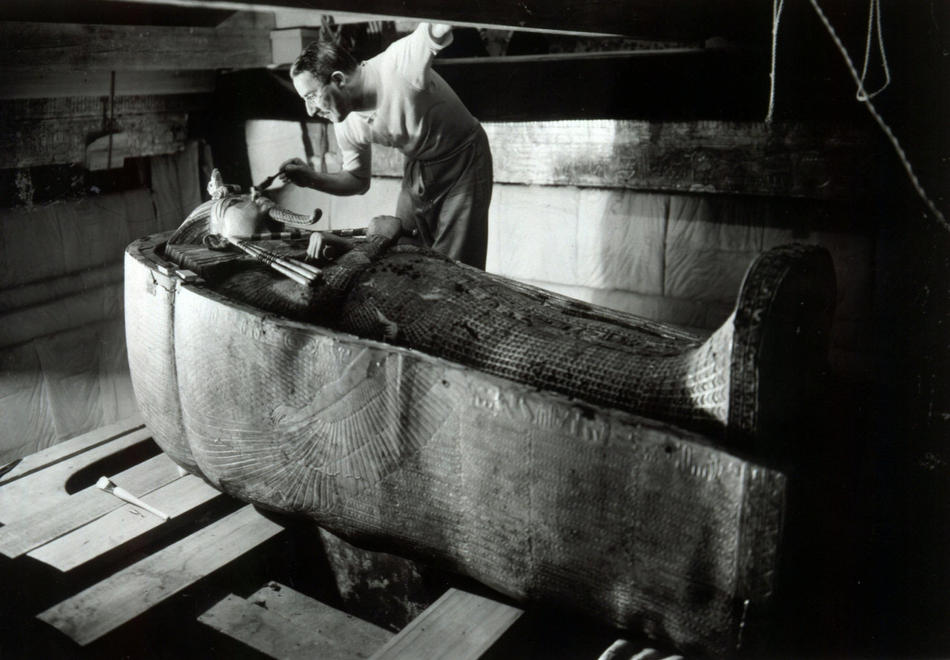For listeners of a certain age, a song about King Tutankhamen immediately brings Steve Martin to the mind’s theater. His “King Tut” mock-reprimanded the commercialization of the Treasures of Tutankhamen exhibit that toured from 1976 to ’79. But this one, “Old King Tut”, was recorded in 1923, the year AFTER the ancient Pharaoh’s tomb was found.
Howard Carter and company made the discovery at a time when many had abandoned the famous Valley of the Kings. Shortly after confirming the validity of their find, Carter sent a telegraph to the dig’s sponsor, Lord Carnarvon:
“At last have made wonderful discovery in Valley; a magnificent tomb with seals intact; re-covered same for your arrival; congratulations.”
But When Carnarvon arrived three weeks later, the team found that they’d not been the first visitors to the tomb:
“At first, their enthusiasm was somewhat dampened, for at the top left-hand corner of the blocking were signs of re-closure, suggesting that the tomb had been entered during antiquity. They began by clearing the descending corridor, which also showed signs of a robber’s efforts. By 4:00 pm on the afternoon of November 26th, the corridor was cleared and the team found a second door, again faced with plaster, stamped over with oval seals, and re-closed at the top left-hand corner. Not knowing what lay behind this doorway, Carter made a small hole in it and inserted a candle to test for foul gases. He then peered into the void beyond, reporting:
“At first I could see nothing, the hot air escaping from the chamber causing the candle flame to flicker, but presently, as my eyes grew accustomed to the light, details of the room within emerged slowly from the mist, strange animals, statues, and gold – everywhere the glint of gold”.”
Image: Howard Carter in Tutankhamen’s tomb, photographed by Harry Burton, created in 1922. The image is in the public domain.


